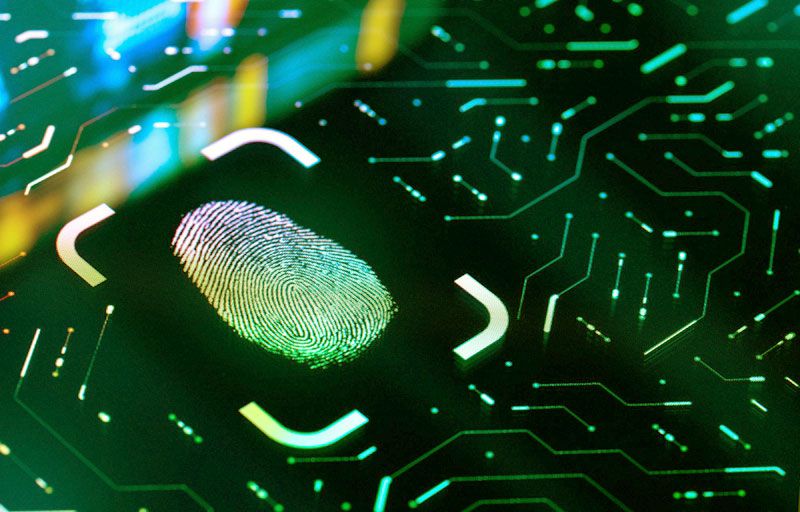In the world of cryptocurrency, security is paramount. The digital nature of these assets makes them vulnerable to various threats, including hacking and theft. To address these concerns, the crypto community is exploring innovative solutions, and one of the most promising is the integration of biometric security measures. This article delves into the potential of biometric security in crypto wallets, highlighting its significance in safeguarding digital assets. Before we dive deeper into this topic, let’s take a moment to acknowledge the importance of secure platforms for crypto trading, such as Voltix Edge.
Biometric Security: The New Frontier
In a digital landscape where convenience and security often stand in opposition, biometric authentication emerges as the promising bridge that brings them together. Biometric data, such as fingerprints, facial recognition, and even voice recognition, offers a unique and personal way to verify an individual’s identity. This not only enhances the user experience but also fortifies the security of crypto wallets.
The Vulnerabilities of Traditional Passwords
Traditional password-based security systems, while prevalent, have their share of vulnerabilities. Weak passwords, forgotten credentials, and susceptibility to hacking attempts have long been pain points in the world of digital security. This is where secure trading platforms come into play, but it’s also where biometric security measures shine.
Biometric Security: The Uniqueness Advantage
Biometric security measures harness the uniqueness of an individual’s physiological or behavioral traits. This uniqueness makes it exceptionally challenging for malicious actors to breach the security barrier. Consider fingerprint recognition, for example. Each person’s fingerprint is distinct, making it virtually impossible to replicate accurately.
Biometrics in Crypto Wallets: Key Benefits
The integration of biometric security measures into crypto wallets offers a range of benefits that are poised to reshape the industry:
- Enhanced Security: Biometric authentication significantly reduces the risk of unauthorized access, providing users with peace of mind regarding their digital assets’ safety.
- Convenience: Biometrics eliminates the need to remember complex passwords. Users can access their crypto wallets with a simple fingerprint scan or facial recognition, streamlining the user experience.
- Resistance to Phishing: Phishing attacks often rely on tricking users into revealing their passwords. With biometrics, these attempts become futile, as a unique physical or behavioral characteristic is required.
- Password Reset Hassles Be Gone: Forgotten passwords are a common issue for many. Biometric security eliminates the need for password resets, making the recovery process more straightforward.
- Improved User Experience: The hassle-free nature of biometric authentication can attract more users to crypto, driving mainstream adoption.
Biometric Technologies in Action
The cryptocurrency industry has already started implementing biometric security measures. Here are some examples of how different biometric technologies are being used:
- Fingerprint Recognition: Many mobile wallets now offer fingerprint recognition for secure access. Users can simply place their finger on the sensor to unlock their wallet.
- Facial Recognition: Some cryptocurrency exchanges have integrated facial recognition technology to verify user identities during account creation and transactions.
- Voice Recognition: Voice recognition is another biometric option, ensuring that the person accessing the wallet is the rightful owner by matching their voice pattern.
Challenges and Concerns
While biometric security measures hold great promise, there are challenges and concerns that need to be addressed:
- Privacy: Storing biometric data carries privacy concerns, as it can be sensitive information. Ensuring the safe storage and responsible use of this data is of utmost importance.
- False Positives and Negatives: Biometric systems are not infallible. There can be instances of false positives (allowing unauthorized access) or false negatives (denying access to the rightful user). Continuous refinement is needed to minimize these errors.
- Compatibility: Not all devices and platforms support biometric authentication, which can limit its widespread adoption. Ensuring compatibility across a variety of devices is essential.
- Backup Solutions: Biometrics should be used in conjunction with other security measures to provide a backup in case of device malfunction or data corruption.
Conclusion: The Biometric Revolution in Crypto Security
The integration of biometric security measures in crypto wallets is a significant step forward in fortifying the industry against threats and enhancing user experience. While challenges exist, continuous innovation and responsible data handling can address them effectively. As the crypto community strives for greater security, the future undoubtedly holds a prominent place for biometric technologies. In this landscape of evolving security measures, online trading platforms offer users a secure environment to trade their digital assets. The combination of secure trading platforms and cutting-edge biometric security in crypto wallets is a formidable force that will safeguard the future of cryptocurrency, attracting more users and pushing the boundaries of what’s possible in the digital realm.

Namaste UI collaborates closely with clients to develop tailored guest posting strategies that align with their unique goals and target audiences. Their commitment to delivering high-quality, niche-specific content ensures that each guest post not only meets but exceeds the expectations of both clients and the hosting platforms. Connect with us on social media for the latest updates on guest posting trends, outreach strategies, and digital marketing tips. For any types of guest posting services, contact us on info[at]namasteui.com.

